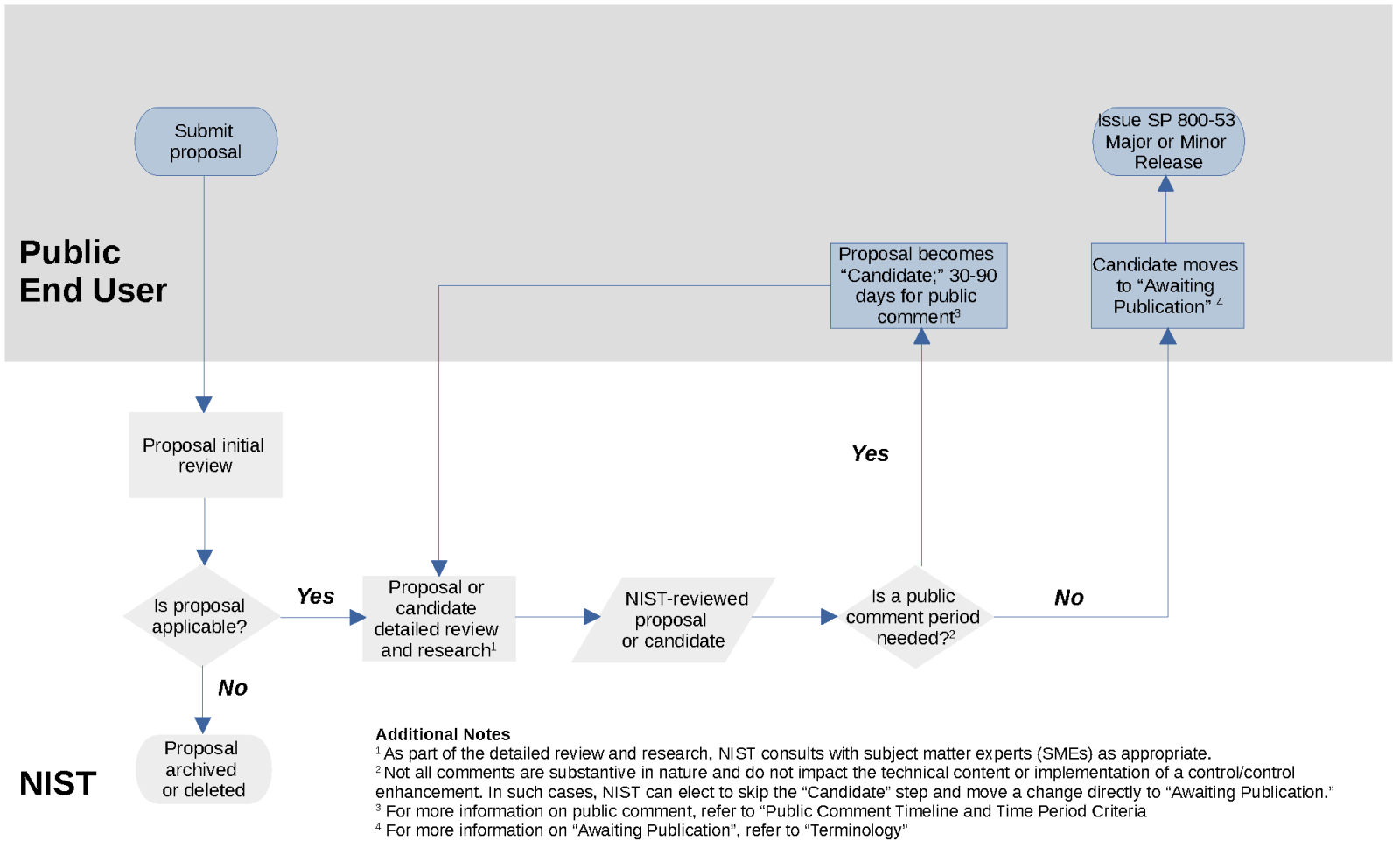Release Schedule
Minor Releases are equivalent to a NIST SP 800-53 Errata Update. Minor releases/errata updates are consistent with NIST procedures and criteria for errata updates, whereby a new copy of a final publication is issued to include corrections that do not alter existing or introduce new technical information or requirements. Such corrections are intended to remove ambiguity and improve interpretation of the work, and may also be used to improve readability or presentation (e.g., formatting, grammar, spelling).
NIST will issue a maximum of 2 minor releases per year.
Major Releases are equivalent to a new NIST SP 800-53 Revision (e.g, Revision 6, Revision 7). Planned major releases can be both time- and event-driven. Time-driven (regularly scheduled) major releases will occur every 2 years. Event-driven releases will occur as necessary, but will be limited to address only critical issues.
NIST will issue a major release every 2 years (in lieu of a Minor Release).
Release Criteria
|
Change Type
|
Minor Release
|
Major Release
|
|
Correct an error in punctuation, spelling, or grammar (Depending on the nature of the editorial correction, a public comment may not be required)
|
X
|
|
|
Correct an error not related to punctuation, spelling, or grammar that does not impact implementation of the control/control enhancement.
|
X
|
|
|
Add new control or control enhancement not in a baseline
|
X
|
|
|
Add control or control enhancement to baseline (existing or new control)
|
|
X
|
|
Remove control or control enhancement from a baseline
|
|
X
|
|
Change the title of a control or control enhancement
|
X
|
|
|
Withdraw a control or control enhancement not in a baseline (either complete withdrawal or incorporation into or move to another control or enhancement)
|
X
|
|
|
Withdraw a control or control enhancement in a baseline (either complete withdrawal or incorporation into or move to another control or enhancement)
|
|
X
|
|
Change a control or control enhancement not due to error (i.e., implementation is affected) – includes addition, removal, or change of an assignment and/or selection operation
|
|
X
|
|
Minor change in Discussion (e.g., reword for clarity, include additional examples)
|
X
|
|
|
Significant change in Discussion (e.g., change in intent, major rewording, addition or removal of entire sentences)
|
|
X
|
|
Addition of Discussion where there had been no guidance previously
|
|
X
|
|
Addition, removal, or change in References
|
X
|
|
|
Addition, removal, or change in Related Controls
|
X
|
|
|
Move control or control enhancement to a different family (with no other changes)
|
|
X
|


